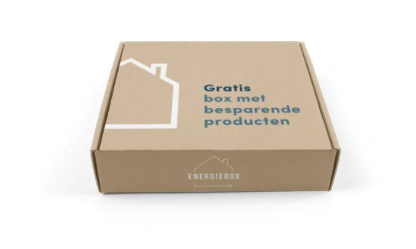
The climate is changing and we are all going to feel the consequences all over the world. Plenty of plans exist to prepare for it or even reverse the process. But what can you contribute as an alderman of a medium-sized city in the Netherlands? What is the impact of climate action at the local level? Rik Thijs, Alderman for Climate, Energy, Land, and Greening in Eindhoven, takes us through his dilemmas, his choices, and his ambitions once a month.
Of course, everyone wants to make their house sustainable — for lower energy costs and the environment. I myself live in a 1930s house, and we have already insulated the floor and walls. It sounds like a simple call from the government, but I realize that it is not as easy as the three words: make your house sustainable.
First of all, you have to have the financial resources for it. There are subsidies for making homes more sustainable, and we run the Klusbus in Eindhoven to do small energy-saving measures in people’s homes for free, but really making your home more sustainable so that it is ready for an energy source other than gas just costs money.

Furthermore, as a municipality, you have to set a good example. We show that we are investing in making our property sustainable with a successful approach. Our Town Hall is one of the most sustainable town halls in the Netherlands, but we are also making community centers more sustainable, for example. Now it is the turn of the sports facilities. A good example is the preservation of Gymnasium Piuslaan. This is a pilot project within the program Slim Verduurzamen Vastgoed of the municipality of Eindhoven. As a result of the approach, the gymnasium is gas-free and has jumped from energy label C to A++++.
We make our buildings more sustainable using an integrated approach in which sustainability costs must be profitable by, among other things, saving on energy costs and cleverly combining them with maintenance costs. This means that we can keep energy costs affordable for users. This is especially important for community centers and sports facilities.
Wider goal
However, the Smart Real Estate Sustainability Project has a broader goal. It is an approach in which we make municipal buildings more sustainable and, at the same time, work together with property owners to make all buildings in the city more sustainable. By making our real estate more sustainable, we have gained much knowledge and experience. With this, we are happy to help other real estate owners get on their way. The results speak for themselves: many sustainability measures have a relatively short payback period and significantly reduce CO₂ emissions. Sustainability measures can be made profitable if you choose an integral approach. By combining maintenance costs with structural modifications and using subsidy opportunities, you can reduce your property’s energy costs and extend its economic life. The municipality can help find and apply for subsidies.
If it is up to the government, all homes in our country will be natural gas-free from 2050. So the challenge also lies with individual homeowners. This is a huge challenge with an essential role for municipalities. How do you stimulate homeowners to invest in a natural gas-free home? So, I think by setting a good example and helping with financing.

